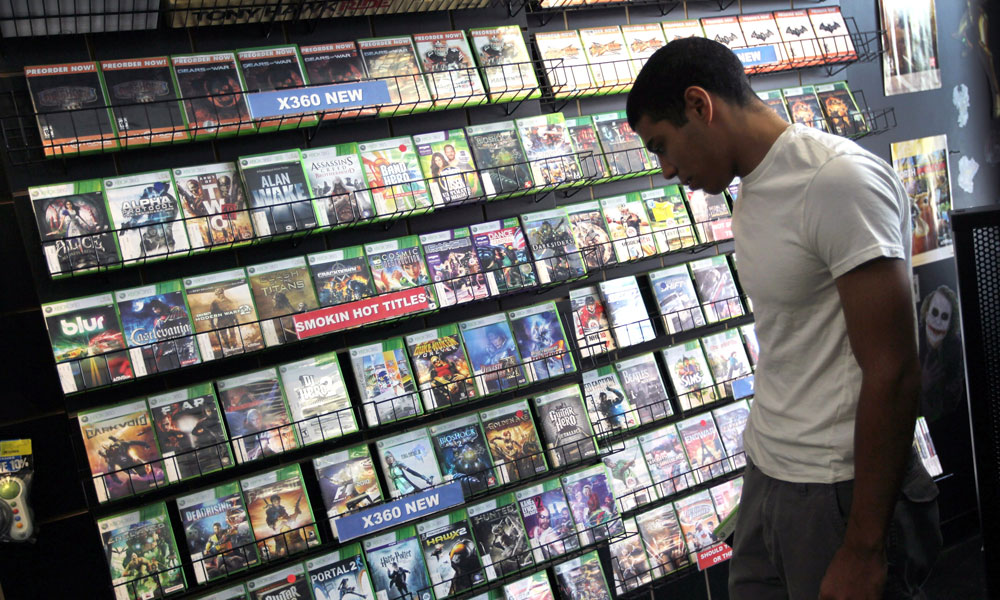
How the ESRB Ratings System Changed Video Games Forever
A quarter century ago this week, the video game industry responded to a threat of federal regulation by launching a trade group and introducing its own voluntary MPAA-style ratings system for games. The solution worked. Here are the lessons you can take from the effort.
The 1992 video game Night Trap broke a lot of ground for the gaming industry, in good ways and questionable ones.

An early example of a full-motion video game starring onetime Different Strokes star Dana Plato, it was one of the earliest CD-based games released to a wide audience via the then-new Sega CD platform. But the game—along with other successes of the era, including Doom and Mortal Kombat—suddenly put the industry on the defensive from Congress due to its definitely-not-for-kids content.
Initially, video game makers took different approaches to the issue. Nintendo censored games on its platforms, while Sega introduced its own ratings system. But the debate that Night Trap helped start led two Democratic senators at the time, Joe Lieberman (CT) and Herb Kohl (WI), to threaten a regulatory plan to tackle the problem. Here’s a clip of some of the congressional hearings from the era:
I’m proud that today the ESRB ratings are so widely accepted and reaffirm the belief that industry self-regulation is not only possible but can be highly effective.
Instead of letting that happen, the gaming industry sprung into action, launching the Interactive Digital Software Association (IDSA) in April 1994, which was renamed the Entertainment Software Association (ESA) in 2003. And 25 years ago this week, a voluntary ratings board, the Entertainment Software Rating Board (ESRB), got its start. As a result, the industry has continued to grow while better managing censorship concerns. Here’s how:
Stores have consistent standards to follow. Although some ratings systems existed before ESRB, they were often inconsistent and focused on just a single platform. Nintendo, for example, didn’t have a ratings system in the early ’90s; Sega did. This made it hard to regulate the purchase of games at the store level. Not so anymore. According to the ESRB, compliance rates for policy enforcement by retailers have generally hovered around 80 percent or above in the past decade, preventing underage shoppers from buying M [mature]-rated games.
Gaming’s audience isn’t just kids anymore. One of the reasons that violent and sexual content in video games became such a big pain point was that games were often seen as products for kids. In 2019 that idea is anything but true. According to ESA [PDF], the average age of gamers in 2019 is 33, and there are nearly twice as many gamers in the 18 to 35 demographic (40 percent) than in the under-18 demographic (21 percent). Ratings helped make this possible.
Developers have more freedom. The ratings system allowed developers to create content focused on mature audiences—think the Grand Theft Auto series—without having to worry about censorship. The result is that game producers have been able to craft more complex stories that have yielded huge financial gains—it’s now a $43 billion industry. The most popular games of 2018, for example, included titles designed for mature players such as Red Dead Redemption 2 and Call of Duty: Black Ops 4, as well as hit sports games and kid-friendly titles such Super Smash Bros. Ultimate.
Game companies won over Congress. Lieberman, the onetime critic of the gaming industry who left Congress in 2013, held up the plan as an example for other industries to follow. “Twenty years ago, I listened as the video game industry said they could put a system in place that parents would trust, retailers would use, and game developers would adhere to,” Lieberman said in a 2014 statement. “I’m proud that today the ESRB ratings are so widely accepted and reaffirm the belief that industry self-regulation is not only possible, but can be highly effective.”
The initiative has adapted to the times. In a 2014 interview with VentureBeat, ESRB President Patricia Vance noted that the industry has evolved its ratings system for both international audiences and changing attitudes, as well as modern trends like online gaming and realistic graphics. But the goal has been to keep changes subtle.
“We’ve adjusted somewhat, but not as much as the film industry,” Vance said.
Thanks in part to the usage of ratings, video games are now more popular with adults than with kids. (Photo by Joe Raedle/Getty Images)






Comments